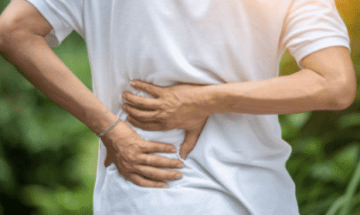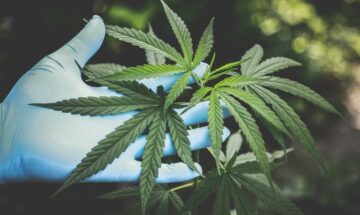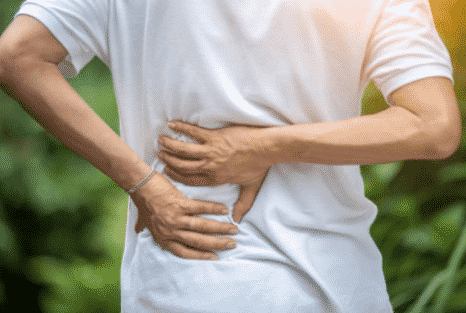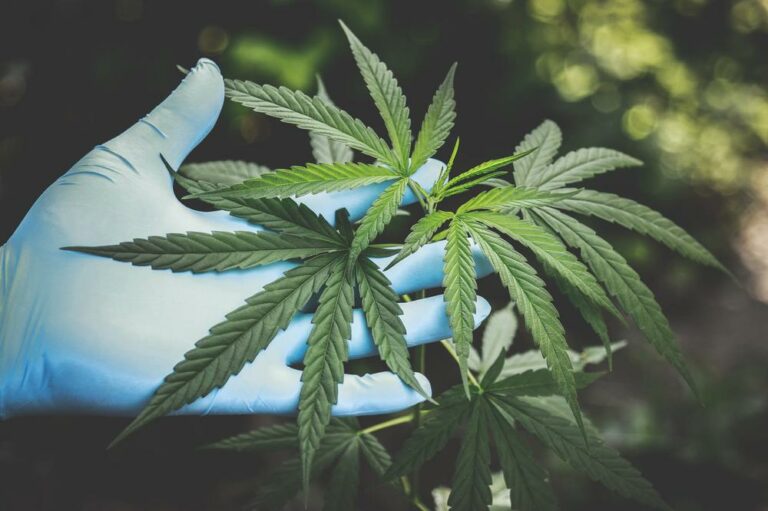
Are you looking for a natural and alternative way to relieve aches, pains, and soreness? Read and know more about CBD pain sticks and how these products may help your overall health and wellness.
How CBD Stick May Help With Pain
CBD pain sticks are a type of CBD topical product containing cannabidiol.
Cannabidiol, popularly called CBD, is one of over a hundred compounds found in the cannabis plant.
Studies have indicated that CBD may possess potential anti-inflammatory(1) and analgesic (pain-relieving) effects(2).
Compared to THC (tetrahydrocannabinol), the psychoactive compound of cannabis, CBD is not intoxicating and does not induce a euphoric high(3).
Moreover, CBD interacts with the body’s endocannabinoid system, or ECS, to maintain homeostasis.
Homeostasis is a process where living organisms maintain stability and balance while acclimating to changes in the environment(4).
The ECS comprises various cannabinoid receptors, primarily CB1 and CB2(5).
CB1 receptors play a role in regulating pain sensations, while CB2 stimulates the body’s anti-inflammatory response(6).
When these two receptors interact with CBD, they may deliver analgesic and anti-inflammatory effects(7).
Presently, there is no specific research on the efficacy of CBD topical products such as CBD pain relief sticks.
However, CBD’s activity in the ECS and the compound’s purported therapeutic benefits may help with reducing pain.
Benefits of Using CBD Stick for Pain
CBD topicals may deliver pain-relieving effects when applied directly to the skin(8).
Moreover, topically applied CBD may help decrease itching, inflammation, muscle tightness, and sunburn(9).
A 2020 case report stated that topically applied CBD cream provided considerable pain relief for individuals experiencing chronic back pain(10).
Another case report published in 2018 noted that individuals with epidermolysis bullosa experienced reduced pain, skin blistering, and faster wound healing after applying topical CBD(11).
Epidermolysis bullosa is a rare skin disorder that induces painful blistering skin.
A randomized controlled trial in 2020 was executed to determine the efficacy of topical CBD in individuals suffering from peripheral neuropathy of the lower extremities(12).
The study showed that CBD oil, administered through the transdermal application, may have helped alleviate pain and other unpleasant sensations linked to peripheral neuropathy.
Peripheral neuropathy results from nerve damage due to injuries of the peripheral nerves or the outer nerves at the spinal cord and the brain(13).
This damage may cause numbness, weakness, and pain in the hands and feet(14).
Lastly, research published in the European Journal of Pain hypothesized that topical CBD may reduce pain and inflammation of rat models with arthritis(15). The researchers believe that the compound did not cause any detrimental side effects.
Studies also suggest that CBD may be beneficial in managing pain associated with the following medical conditions(16):
- Migraines
- Fibromyalgia (pain all over the body)
- Multiple sclerosis (a central nervous system disease)
- Parkinson’s disease
How to Use CBD Pain Sticks
CBD topical products such as CBD relief sticks, CBD creams, CBD lotions, CBD salves, and CBD balms are used by directly applying the product to the painful or affected area of the skin for localized pain relief(17).
Topically administered CBD does not enter the bloodstream. Instead, the skin’s CB2 receptors pick up and absorb the cannabinoids and help relieve inflammation and pain(18).
CBD topicals like CBD pain sticks are sometimes marketed as pain relief creams for sore muscles and joint pain. However, it is still essential to consult a healthcare professional before purchasing or using any CBD products for any medical condition.
Doctors may recommend a CBD pain stick that is best suitable to relieve an individual’s pain or medical issue.
People may also use other CBD oil products such as CBD tinctures, CBD edibles like gummies, and CBD vapes for pain management.
The effectiveness of these CBD products may vary depending on the user’s metabolism, weight, and diet.
What to Expect: What Is a CBD Pain Stick?
A CBD pain stick is a topical CBD product that uses a roll-on or twist-bottom applicator. Individuals can rub the product on an affected area to relieve pain and soreness.
Many CBD brands market these products for nourishing or hydrating the skin and providing a cooling sensation, along with their pain-relieving effects.
CBD pain sticks may also contain vitamin E and white willow bark, which may have therapeutic properties for pain, headaches, and inflammation(19).
Other botanicals in CBD pain sticks may include arnica, peppermint, eucalyptus, menthol, and camphor, which gives a cooling effect.
Arnica is a herb used for sprains, muscle aches, bruises, and inflammation(20). Meanwhile, white willow bark contains pain-relieving effects, particularly back pain and inflammatory conditions(21).
It is vital to note that CBD should not be used as a substitute for treating illnesses. Before using CBD, individuals should consult a health care provider and get an official diagnosis regarding their medical condition.
CBD Dosage When Using CBD Pain Sticks
CBD topical products like CBD pain sticks do not have a set dosage specifically for pain.
Presently, the Food and Drug Administration or the FDA does not approve of any CBD dosage guides for pain relief.
It is generally recommended for individuals without experience in taking CBD to start taking low dosages and gradually increase the dosage(22).
Choosing the Best CBD for Pain
CBD Extracts
There are various types of CBD extracts: full-spectrum CBD oil, broad-spectrum CBD oil, and CBD isolates(23).
Full-spectrum CBD oil contains all compounds of the cannabis plant, including cannabinoids, essential oils, terpenes, and flavonoids.
Flavonoids are active compounds containing antioxidant, antiviral, and anti-inflammatory properties(24).
Full-spectrum CBD extracts also possess less than 0.3% THC concentration.
Moreover, due to all the cannabis compounds combined in one product, this CBD extract is known to provide the entourage effect.
The entourage effect refers to the phenomenon wherein all the active compounds of cannabis function better when taken simultaneously.
Meanwhile, terpenes provide the unique fragrance or aroma of cannabis(25),
Broad-spectrum CBD oil is similar to full-spectrum CBD oil as it contains all the natural compounds of cannabis. However, broad-spectrum is THC-free(26).
Lastly, CBD isolates are pure CBD.
Carrier Oils
After extracting the CBD hemp extract from the hemp plant, CBD manufacturers infuse the compound into a carrier oil such as MCT oil, coconut oil, or hempseed oil(27).
Remember that hempseed oil and hemp oil have significant differences.
Hemp oil, also called CBD oil, is an essential oil derived from the leaves, stalks, and flowers of hemp plants.
On the other hand, hempseed oil is produced from pressed hemp seeds. Hempseed oil is rich in fatty acids and nutrients. However, it does not have CBD(28).
Extraction Method
Natural solvent, ethanol, and carbon dioxide extraction methods are some commonly utilized extraction techniques to produce safe CBD products(29).
Meanwhile, using butane or hexane as extraction methods may leave behind toxic residues, such as pesticides and heavy metals, which are harmful when ingested.
Ingredients
It is highly encouraged to choose CBD pain sticks made with organic and natural ingredients because the product is directly applied to the skin.
CBD topicals, such as CBD salves and CBD creams, may contain beeswax, aloe vera, shea butter for a moisturizing effect.
Individuals using CBD topicals for the first time should consult with their physician or dermatologist to determine whether they are allergic to certain ingredients in the product.
Third-party Lab Testing
CBD products should undergo a thorough assessment by third-party lab tests.
These tests examine the product for the presence of any harmful contaminants like pesticides or heavy metals that may be detrimental to the consumer’s health.
CBD brands should also openly display their products’ certificate of analysis (COA) on their websites.
COAs are test results from third-party laboratories which show the CBD product’s precise cannabinoid content.
It is vital to check whether the COA matches the CBD product label before purchasing any CBD products.
How Long Does CBD Take to Help Pain?
The time it takes for CBD to help with pain may depend on the user’s body weight, the administration method used, and the potency of CBD.
CBD topicals usually take approximately 15 to 20 minutes before users start to feel the effect of the compound application(30).
Meanwhile, other CBD forms like edibles and CBD gummies may begin to take effect within 30 minutes to an hour after ingestion(31).
How Long Will CBD Help With Pain?
Presently, there are no clinical studies that determine how long CBD products may stay in the system when used for pain relief.
Generally, the effects of CBD topicals last for around two to four hours(32).
Meanwhile, transdermal patches’ effects may last for about 12 hours, while transdermal products such as CBD-infused gels may be effective for four hours(33).
Risks and Side Effects of Using CBD Stick for Pain
An animal study that examined the effects of CBD transdermal application has noted that the compound may offer therapeutic benefits for pain caused by arthritis without apparent side effects(34).
However, the research was conducted on animals and focused on transdermal administration.
Transdermal refers to the administration of drugs through or on top of the skin and absorbed into the bloodstream, whereas topical products do not penetrate the skin.
Further clinical human trials are needed to determine the specific side effects of CBD sticks for pain.
In general, taking CBD may induce mild side effects such as diarrhea, drowsiness, dry mouth, fatigue, and loss of appetite(35).
Legality of CBD
CBD products with more than 0.3% THC concentration are considered illegal under United States federal laws(36).
Meanwhile, the Farm Bill in 2018 removed hemp and hemp-based CBD products that have less than 0.3% THC from the Drug Enforcement Administration’s list of controlled substances.
The law also legalized the cultivation of industrial hemp in the United States.
Currently, Epidiolex is the only FDA-approved CBD product.
Epidiolex is a drug prescribed to treat tubular sclerosis and seizures caused by two rare forms of childhood epilepsy(37).
Additionally, the FDA has disseminated a warning against CBD companies that label and market CBD products as supplements or food additives, as this practice is considered illegal(38).
All of the 50 U.S states have legislation regarding CBD use. However, the restriction levels may vary depending on each state(39).
For individuals considering CBD, it is essential to check the laws first to verify whether CBD usage is legal in an area.
U.S states like Arizona, California, Colorado, Florida, New York, and Washington have programs that legalized medical cannabis as of February 2022(40).
FAQs
1. How can CBD stick help with pain?
A CBD pain stick is a CBD topical product with cannabidiol.
CBD works by interacting with the ECS and its cannabinoid receptors, CB1 and CB2(41).
CB1 receptors help regulate pain sensations, whereas CB2 receptors play a role in the anti-inflammatory response(42).
The interaction or activity between CBD and the two receptors may provide analgesic and anti-inflammatory effects(43).
2. What evidence or research exists to say that CBD stick helps with pain?
A recent case study has shown that topically administered CBD cream may have provided pain relief for individuals suffering from chronic back pain(44).
A 2018 report indicated that topical CBD had provided symptom relief in individuals with epidermolysis bullosa, a rare skin disease. The researchers noted that CBD induced less pain, blistering, and promoted quicker wound healing(45).
3. Is there any evidence that CBD sticks can make the pain worse?
There are no research studies that suggest CBD sticks can worsen pain.
The World Health Organization or the WHO has reported that CBD is safe and well tolerated by the body(46).
The report also stated that CBD does not have a potential for abuse or is non-addictive(47).
4.Will CBD sticks interact with any current medication I may be taking for pain?
Topical CBD products do not enter the body’s bloodstream(48). However, further clinical research is needed to determine whether topical CBD products have the possibility to interact with other drugs.
In general, CBD may interact with cytochrome P450 liver enzymes, which are necessary for metabolizing many pharmaceutical drugs. The inhibition of these enzymes may cause the duration of action and effects of drugs to increase(49).
The following medications use the cytochrome P450 enzymes and may interact with CBD include(50):
- Antibiotics
- Antiepileptics
- Antihistamines
- Antidepressants
- Beta-blockers
- Nonsteroidal anti-inflammatory drugs (NSAIDs)
5. Are there other treatments I should consider alongside CBD sticks to help with pain?
Pain relievers are prescribed to individuals to reduce the discomfort from diseases, surgical procedures, and chronic medical conditions(51).
These drugs may come in two variants, over-the-counter (OTC) and prescription medication.
OTC medicine relieves minor pains like muscle aches, headaches, and menstrual cramps. Prescription pain relievers are used to treat severe and chronic pain.
For your safety, talk to your doctor for advice on drug interactions that may arise from taking CBD alongside other medications.
6. Can I fail a drug test if I use a CBD stick for pain?
CBD oil products with a THC level of less than 0.3% do not usually result in a drug test failure.
However, prolonged and frequent use of CBD oil may increase the THC content in the system to detectable levels(52).
7. What is the CBD dosage for pain?
There is no standard CBD dosage for pain. Generally, the appropriate dosage of CBD may vary depending on factors like genetics, health conditions, stress levels, diet, and exercise(53).
Moreover, it is highly encouraged for individuals taking CBD for the first time to take low doses before slowly increasing the amount of CBD to take(54).
- Antioxidative and Anti-Inflammatory Properties of Cannabidiol
https://www.ncbi.nlm.nih.gov/pmc/articles/PMC7023045/ - A Balanced Approach for Cannabidiol Use in Chronic Pain
https://www.ncbi.nlm.nih.gov/pmc/articles/PMC7204604/ - Cannabidiol (CBD)
https://www.ncbi.nlm.nih.gov/books/NBK556048/ - The Endocannabinoid System, Our Universal Regulator
https://www.jyi.org/2018-june/2018/6/1/the-endocannabinoid-system-our-universal-regulator - An introduction to the endogenous cannabinoid system
https://www.ncbi.nlm.nih.gov/pmc/articles/PMC4789136/ - Cannabinoids and Pain: New Insights From Old Molecules
https://www.frontiersin.org/articles/10.3389/fphar.2018.01259/full - CBD oil: What is it and how does it work?
https://www.eehealth.org/blog/2019/09/cbd-oil/ - Page 210 of Healing With CBD
https://drive.google.com/file/d/1AGlxnhS2SoFeOXEuysv75bd_C9pEnwsU/view - Ibid.
- Cannabidiol (CBD) as a treatment of acute and chronic back pain: A case series and literature review
https://pubmed.ncbi.nlm.nih.gov/32421842/ - Self-initiated use of topical cannabidiol oil for epidermolysis bullosa
https://pubmed.ncbi.nlm.nih.gov/29786144/ - The Effectiveness of Topical Cannabidiol Oil in Symptomatic Relief of Peripheral Neuropathy of the Lower Extremities
https://pubmed.ncbi.nlm.nih.gov/31793418/ - Peripheral Neuropathy: Symptoms & Causes
https://www.mayoclinic.org/diseases-conditions/peripheral-neuropathy/symptoms-causes/syc-20352061 - Ibid.
- Transdermal cannabidiol reduces inflammation and pain-related behaviours in a rat model of arthritis
https://www.ncbi.nlm.nih.gov/pmc/articles/PMC4851925/ - Page 167-168 of Healing With CBD
https://drive.google.com/file/d/1AGlxnhS2SoFeOXEuysv75bd_C9pEnwsU/view - page 210 of Healing With CBD
https://drive.google.com/file/d/1AGlxnhS2SoFeOXEuysv75bd_C9pEnwsU/view - page 210 of Healing With CBD
https://drive.google.com/file/d/1AGlxnhS2SoFeOXEuysv75bd_C9pEnwsU/view - Willow bark
https://www.mountsinai.org/health-library/herb/willow-bark - Arnica
https://www.mountsinai.org/health-library/herb/arnica - Willow bark
https://www.mountsinai.org/health-library/herb/willow-bark - CBD dosing
https://www.projectcbd.org/guidance/cbd-dosing - Cannabidiol primer for healthcare professionals
https://www.ncbi.nlm.nih.gov/pmc/articles/PMC7340472/q - Flavonoids as antioxidants
https://pubmed.ncbi.nlm.nih.gov/10924197/ - The Cannabis Terpenes
https://www.ncbi.nlm.nih.gov/pmc/articles/PMC7763918/ - Cannabidiol primer for healthcare professionals
https://www.ncbi.nlm.nih.gov/pmc/articles/PMC7340472/ - Healing With CBD, page 205.
https://drive.google.com/file/d/1AGlxnhS2SoFeOXEuysv75bd_C9pEnwsU/view - Hemp Seed Oil Properties
https://extension.okstate.edu/fact-sheets/hemp-seed-oil-properties.html - Cannabidiol primer for healthcare professionals
https://www.ncbi.nlm.nih.gov/pmc/articles/PMC7340472/ - Healing With CBD, page. 193
https://drive.google.com/file/d/1AGlxnhS2SoFeOXEuysv75bd_C9pEnwsU/view - Ibid. page 191.
- Page 210 of Healing With CBD
https://drive.google.com/file/d/1AGlxnhS2SoFeOXEuysv75bd_C9pEnwsU/view - Page 212 of Healing With CBD
https://drive.google.com/file/d/1AGlxnhS2SoFeOXEuysv75bd_C9pEnwsU/view - Transdermal cannabidiol reduces inflammation and pain-related behaviours in a rat model of arthritis
https://www.ncbi.nlm.nih.gov/pmc/articles/PMC4851925/ - What are the benefits of CBD — and is it safe to use?
https://www.mayoclinic.org/healthy-lifestyle/consumer-health/expert-answers/is-cbd-safe-and-effective/faq-20446700 - CBD & THC: Myths and misconceptions
https://www.projectcbd.org/cbd-101/cbd-misconceptions - What are the benefits of CBD — and is it safe to use?
https://www.mayoclinic.org/healthy-lifestyle/consumer-health/expert-answers/is-cbd-safe-and-effective/faq-20446700 - What You Need to Know (And What We’re Working to Find Out) About Products Containing Cannabis or Cannabis-derived Compounds, Including CBD
https://www.fda.gov/consumers/consumer-updates/what-you-need-know-and-what-were-working-find-out-about-products-containing-cannabis-or-cannabis - Cannabidiol (CBD)-what we know and what we don’t
https://www.health.harvard.edu/blog/cannabidiol-cbd-what-we-know-and-what-we-dont-2018082414476 - State Medical Cannabis Laws
https://www.ncsl.org/research/health/state-medical-marijuana-laws.aspx - An introduction to the endogenous cannabinoid system
https://www.ncbi.nlm.nih.gov/pmc/articles/PMC4789136/ - Cannabinoids and Pain: New Insights From Old Molecules
https://www.frontiersin.org/articles/10.3389/fphar.2018.01259/full - CBD oil: What is it and how does it work?
https://www.eehealth.org/blog/2019/09/cbd-oil/ - Cannabidiol (CBD) as a treatment of acute and chronic back pain: A case series and literature review
https://pubmed.ncbi.nlm.nih.gov/32421842/ - Self-initiated use of topical cannabidiol oil for epidermolysis bullosa
https://pubmed.ncbi.nlm.nih.gov/29786144/ - CANNABIDIOL (CBD) Pre-Review Report
https://www.who.int/medicines/access/controlled-substances/5.2_CBD.pdf - CANNABIDIOL (CBD) Pre-Review Report Agenda Item 5.2
https://www.who.int/medicines/access/controlled-substances/5.2_CBD.pdf - Page 210 of Healing With CBD
https://drive.google.com/file/d/1AGlxnhS2SoFeOXEuysv75bd_C9pEnwsU/view - Page 114-115 of Healing With CBD
https://drive.google.com/file/d/1AGlxnhS2SoFeOXEuysv75bd_C9pEnwsU/view - Page 115-116 of Healing With CBD
https://drive.google.com/file/d/1AGlxnhS2SoFeOXEuysv75bd_C9pEnwsU/view - Pain Relievers
https://my.clevelandclinic.org/health/treatments/12058-pain-relievers - Can You Take CBD and Pass a Drug Test?
https://www.consumerreports.org/cbd/can-you-take-cbd-and-pass-a-drug-test/ - CBD dosing
https://www.projectcbd.org/guidance/cbd-dosing - Ibid.












